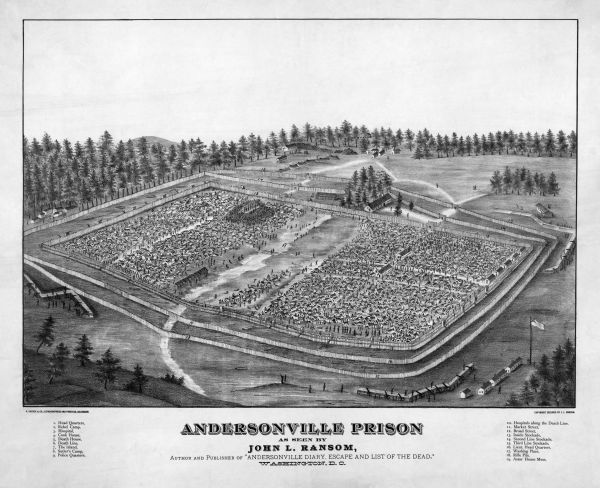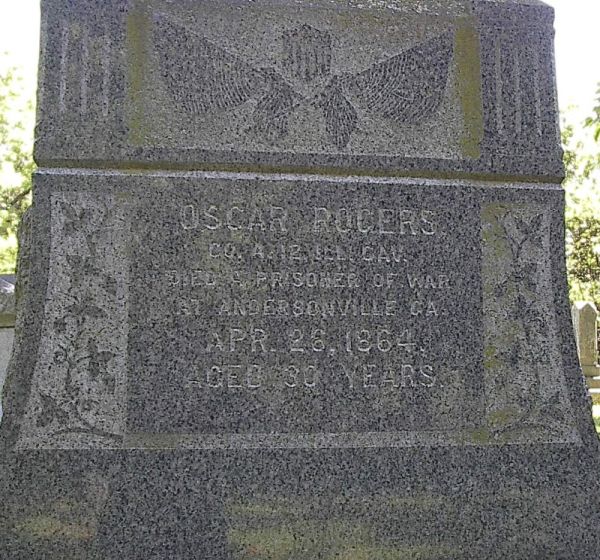The Horrors Of War
Andersonville Prison. That phrase conjures up horrible images of men living in conditions beyond comprehension. It was notorious even back when it opened. Any man who was taken prisoner feared being sent there. Word had spread about the conditions that turned strong men into walking skeletons.
The prison’s official name was Camp Sumter and it was located near Andersonville, Georgia. It opened in February 1864 and ran for fourteen months. It was built to house Union prisoners after the Northern forces moved closer to the prison located in Richmond, Virginia. None of the prisoner of war camps on either side had adequate food or housing for the men taken prisoner but Andersonville was the worst. There wasn’t even enough food for the Confederate men assigned there as guards.
The camp was originally intended to house 10,000 men but within a few months over three times that number lived behind those walls. During the time it was opened over 45,000 men were imprisoned there.
The creek that ran through the camp soon became fouled with human waste and disease was rampant. Men struggled every day with hunger, parasites, disease, and guards. They also feared each other. Desperate men banded together to form groups called “Raiders”. These men would attack other prisoners and steal food, blankets, clothing, and any money that they possessed.
The commander of Andersonville was Captain Henry Wirz during the entire time it was opened until it closed in April 1865. He was arrested after the war ended and put on trial for his horrendous treatment of the prisoners. Wirz was convicted and sentenced to death. He was executed in Washington, D.C on November 10, 1865.
A lot of the men that died were buried in mass graves and records for the others were vey unorganized. One prisoner who was asked to assist with the record keeping was Dorwent Atwater. He feared that the Confederates would try to cover up the amounts of men that were dying on a daily basis so he turned one set of records in and hid another set. This was used to paint a more accurate portrayal of life and death in the camp.
After the war ended a National Cemetery was created. There are 13, 714 men buried there. 921 of them are marked “unknown”. In the grave marked number 747 was a young man named Oscar Rogers.
Oscar’s family lived in New Milford at the time the Civil War began in 1861. Though the reason that compelled the young man to join the fighting has been lost to time, records show that he signed up in September, 1862. New Milford’s quota for recruits was 80 men. Over 139 men from the town signed up.
By September 1862, the romantic notion of war had been replaced with the stories of true horror. So Oscar Rogers would have known what exactly he was signing up for when he joined that month. He was assigned to Company A 12th Cavalry Unit. This regiment would fight in some of the bloodiest battles including Chancellorsville, Gettysburg, and Antietam.
Research did not reveal exactly when Oscar was taken prisoner. But his name appears in Atwater’s records. Oscar Rogers died on April 26, 1864 from starvation and dysentery. He was originally buried in the cemetery at the prison. But his body was retrieved by his family and brought home to rest with his parents in the New Milford Cemetery. His tombstone reads:
Oscar Rogers
Co. A 12th IL Cavalry
Died Prisoner of War at Andersonville, Ga.
April 26,1864
Aged 30 years
Next to Oscar’s tombstone is the stone of his sister, Fannie. She married Dr.James Rosecrance and together they built a house to use as a clinic to assist veterans after the war. Later, they would focus more on housing young children who were orphaned. When Fannie died in 1916, the house became the Rosecrance Memorial Home for Children. Their legacy has continued and spread to help individuals with substance abuse and behavioral health services.
Oscar Rogers, like so many other men and women from Winnebago County, did not hesitate to step forward when his country needed him. His family turned their grief outward to help other veterans when they returned wounded from the battlefields. Their story of sacrifice and dedication to help other veterans and their families is only one of the thousands of men and women from this county who have served their country.
Copyright © 2017 Kathi Kresol, Haunted Rockford Events


